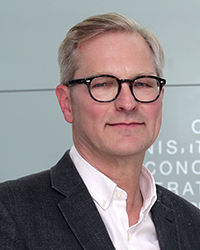
“We need, as the community of official statistical organisations, to continue to join forces to co-innovate and co-invest in the next generation of practices and solutions to meet common challenges.”
Chair of the SIS-CC Strategic Level Group (SLG)
Chief Statistician, Director of Statistics and Data, OECD
Demand for evidence for policy is increasing – and so are expectations that statistics and data be accurate, timely, granular, accessible and compiled in interaction with a complex data ecosystem including the private sector, civil society and local governments. To cope with this demand organisations need the necessary statistical infrastructure, both in terms of human capacity and skills, and in terms of tools to operate efficiently.
To a large degree, statistical organisations share common needs and similar processes.
At the same time, official statistics are still a niche market driven by specific requirements, especially in terms of quality and compliance with standards, and a strong culture of international, open collaboration. This probably explains why, thus far, no sustainable offering has truly emerged on the ‘official statistics market’. And this is why we strongly believe that open source, community, and standard-driven dynamics are the right way to fill this gap, and here is where the SIS-CC has come in. We need, as the community of official statistical organisations, to continue to join forces to co-innovate and co-invest in the next generation of practices and solutions to meet common challenges. Most of us will not be able to cope with these challenges alone.
Yet, the maturity of practices among different groups of institutions varies greatly. Some are strong enough to invest in their infrastructure, and they usually prefer to do so to move faster and keep full control. On the other end of the spectrum, lower-capacity organisations struggle to maintain even basic infrastructure. We believe this diversity, and more generally, the diversity of organisations’ profiles and priorities, can be a strength and an opportunity: for the stronger organisations to emulate each other and mutually leverage their investments; for the less advanced organisations to catch up and bring in their qualitative contribution and creative ideas.
“How can the community grow more diverse in such a way that mutualisation and cross-fertilisation do not hamper agility and capacity for each organisation to move at their own pace?”
It has been 10 years now that SIS-CC has existed as a community – I can recall when we first met in 2011, on the topic: “Laying the foundations for a strong collaboration community”. So much has happened since then, with the Community tripling in size. Looking back, I can see particularly important moments of adjustment. Firstly, when in 2014, and thanks to the enthusiasm of founding members ABS and Statistics NZ, the Community drafted its 2014-2019 Strategy. The 2020-2025 strategy still builds upon this. This was the moment when we forged a governance and ‘business model’ for the community, and set ourselves ambitious goals, which were achieved, if not exceeded during the cycle that just ended. Second, when, in 2019, the new .Stat Suite was launched as a fully open-source solution. An outcome, that was decided and implemented in a short period (24 months), was the full redevelopment of .Stat is an SDMX-native, open-source platform, leveraging Eurostat’s SDMX Source project, but also integrating the most innovative technologies, such as DevOps, Cloud readiness and truly componentised architecture. In parallel, the institutional and geographical setting became more inclusive starting in 2017-18, when ILO initiated the LMIS project based on .Stat, or when INS and SPC joined the Community, and pilot work took place in collaboration with UNICEF, PARIS21, and UNSD, in Cambodia and Ghana.
This takes me back to the central question raised above. I believe that the 2020-25 strategy, resulting from intense collaboration among members in 2019, can bring useful responses. These are not of a theoretical nature, but of pragmatic character and built on broad-faceted experience over the past period, for instance, the ‘multi-tier governance’ approach. I hope this will interest you in getting to know the Community and, why not, join it for a common journey in the future!

